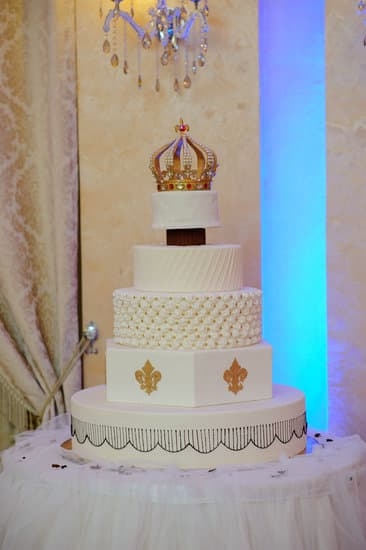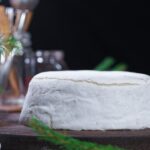Fruit for cake decoration adds a vibrant and fresh touch to your confectionery creations, elevating them from ordinary to spectacular. The use of fruit as a decorative element on cakes not only enhances their visual appeal but also offers a delicious burst of flavor. Whether you are looking to add a pop of color or a hint of sweetness, incorporating fruit into your cake decorations can take your baking skills to the next level.
Using fruit for cake decoration presents a myriad of benefits beyond just aesthetics. Fruits like berries, citrus fruits, and tropical options not only look beautiful on cakes but also provide natural sweetness and added nutrition. Plus, the variety of colors, shapes, and textures that fruits offer can help you create visually stunning designs that are sure to impress your guests.
When it comes to selecting fruits for cake decoration, the options are endless. From classic choices like strawberries and kiwis to more exotic picks such as dragon fruit and passion fruit, each type of fruit brings its own unique flair to the table. Experimenting with different combinations of fruits can result in eye-catching arrangements that cater to both taste buds and visual appeal.
Benefits of Using Fruit as Cake Decoration
Using fruit as cake decoration offers a multitude of benefits beyond just adding color and flavor to your confection. Here are some advantages of incorporating fruits into your cake decorating:
- Health Benefits: Fruits are packed with essential vitamins, minerals, and antioxidants that can boost the nutritional value of your dessert. By using fruits as decorations, you can offer a healthier option to those indulging in your cake.
- Colorful and Vibrant: Fruits come in a wide array of colors, adding a vibrant and appealing aesthetic to your cakes. Whether you choose berries for a pop of red or kiwi for a splash of green, fruits can make your cakes visually stunning.
- Versatile: From berries to citrus fruits to tropical options like pineapple and mango, there are endless possibilities when it comes to choosing fruits for cake decoration. This versatility allows you to create unique designs and flavor combinations.
In addition to the visual appeal and health benefits, using fruit as cake decoration also provides a fresh and natural touch to your creations. Whether you opt for sliced strawberries on a summer cake or caramelized figs on a winter dessert, fruit decorations can elevate the overall taste and presentation of your cakes.
- Instead of traditional buttercream roses or fondant figurines, try topping your cake with an array of glazed berries for a fresh and vibrant look.
- Experiment with different slicing techniques such as scalloping kiwi slices or creating flower shapes out of mangoes to add intricate details to your cake decorations.
- Consider mixing different types of fruits together in patterns or arrangements that complement the flavor profile of the cake itself, such as pairing citrus fruits with vanilla sponge or tropical fruits with coconut cream.
Types of Fruits That Are Perfect for Cake Decoration
When it comes to choosing the perfect fruits for cake decoration, it is essential to consider both aesthetics and taste. Certain fruits are not only visually appealing but also complement the flavors of the cake, enhancing its overall presentation. Some popular fruits that are ideal for cake decoration include berries such as strawberries, raspberries, blueberries, and blackberries. These small and vibrant fruits add a pop of color to any cake and are versatile in terms of placement and arrangement.
Citrus fruits like oranges, lemons, and limes are another excellent choice for cake decoration due to their bright colors and refreshing flavor profiles. Slices of these fruits can be used to add a citrusy zing to cakes or simply as decorative garnishes. Additionally, tropical fruits such as kiwi, mango, and pineapple can bring a unique and exotic element to cake decoration. Their juicy sweetness and distinct textures can provide a delightful contrast to the richness of the cake.
In addition to fresh fruits, dried fruits like figs, apricots, cherries, and cranberries can also be used for cake decoration. Dried fruits add a chewy texture and concentrated flavor to cakes, making them a great option for adding depth to the overall taste profile.
Furthermore, candied fruits such as candied orange peel or cherries can lend a touch of sweetness and elegance to cakes when used as decorations. Overall, selecting the right combination of fruits based on their flavor profiles and visual appeal can take your cake decoration skills to the next level.
How to Prepare and Cut Fruit for Cake Decoration
When it comes to using fruit for cake decoration, the preparation and cutting of the fruit play a crucial role in achieving a visually appealing result. Properly prepared and cut fruit not only adds color and flavor to your cakes but also enhances the overall presentation. Here are some tips on how to prepare and cut fruit for cake decoration:
Selection of Fruits
Before you start preparing the fruit for cake decoration, it is important to select the right fruits that are suitable for this purpose. Opt for fresh, ripe fruits that are not overly ripe or under-ripe. The fruits should be firm and have vibrant colors to create an eye-catching effect on your cakes.
Washing and Cleaning
Start by washing the fruits thoroughly under running water to remove any dirt, pesticides, or wax coatings. Use a mild fruit wash if necessary, but make sure to dry them completely before proceeding with cutting.
Cutting Techniques
Depending on the design you have in mind for your cake decoration, there are various cutting techniques you can use. For instance, thinly slice round fruits like strawberries or kiwis for a delicate touch, while cubing fruits like mangoes or pineapples can create interesting shapes and textures on your cakes. Experiment with different cutting styles to achieve the desired look for your cake decorations.
Techniques for Arranging Fruit on Cakes
When it comes to decorating cakes with fruit, the arrangement can make a significant impact on the overall presentation. There are various techniques that can be used to arrange fruit on cakes in an appealing and eye-catching manner.
One popular technique is creating concentric circles of sliced fruits, starting from the outer edge of the cake and working towards the center. This method not only looks visually pleasing but also ensures that each slice of cake gets a fair share of fruit topping.
Another technique for arranging fruit on cakes is creating decorative patterns or designs. For example, you can alternate slices of different colored fruits like strawberries and kiwis in a checkerboard pattern to create a vibrant and colorful design on top of the cake. Additionally, you can layer thin slices of fruit in a cascading pattern along the sides of the cake for a more elegant and sophisticated look.
It is vital to consider the size, shape, and texture of the fruits when arranging them on cakes. Mixing various types of fruits with different colors and textures can add depth and dimension to the decoration. Experimenting with different placement options such as scattering small berries randomly or placing larger fruits strategically can help create visually interesting compositions on cakes.
| Benefits of Arranging Fruit | Techniques for Arranging Fruit |
|---|---|
| Adds freshness and natural sweetness to cakes | Creating concentric circles |
| Provides a visual appeal and color contrast | Designing decorative patterns or designs |
| Offers versatility in creative cake decorations | Layering fruits in cascading patterns |
Creative Fruit Cake Decoration Ideas for Different Occasions
Fruit is not only a delicious treat to enjoy on its own, but it can also be a beautiful and colorful addition to cake decoration. When it comes to creative fruit cake decoration ideas for different occasions, the possibilities are endless. Whether you are celebrating a birthday, wedding, or any other special event, incorporating fruit into the design of your cake can elevate its visual appeal and add a refreshing touch of flavor.
One creative idea for fruit cake decoration is to create a stunning fruit arrangement on top of the cake. This can be done by carefully placing sliced strawberries, kiwis, blueberries, and other fruits in an artistic pattern. You can also use cookie cutters to create fun shapes out of fruits like watermelon and pineapple, adding a whimsical touch to your cake design.
Another popular option for fruit cake decoration is to infuse the cake layers with fruity flavors. You can add pureed fruits like mango, raspberry, or passion fruit to your batter before baking to give your cake a natural and delicious taste. Decorating the top of the cake with matching fresh fruits will tie the whole look together and make for a visually appealing dessert centerpiece.
| Benefits of Using Fruit as Cake Decoration | Types of Fruits Perfect for Cake Decoration |
|---|---|
| Enhances visual appeal of cakes with vibrant colors | Strawberries, Kiwis, Blueberries |
| Adds natural and refreshing flavor | Pineapple, Mango |
Tips for Preserving and Keeping Fruit Decorations Fresh on Cakes
When it comes to decorating cakes with fruit, ensuring that the fruit remains fresh and visually appealing is key. Here are some tips for preserving and keeping fruit decorations fresh on cakes:
- Choose fruits that are firm and ripe: Selecting fruits that are at their peak ripeness will not only add flavor to your cake but also ensure that they last longer as decorations. Avoid overripe or mushy fruit, as they can quickly deteriorate on the cake.
- Use a protective glaze: To prevent fruits from drying out or browning too quickly, consider using a thin layer of apricot jam or simple syrup as a glaze. This not only adds shine to the fruit but also helps to lock in moisture and extend their freshness.
- Refrigerate if necessary: If you plan on decorating the cake ahead of time or using delicate fruits like berries, refrigerating the cake can help keep the fruits fresh for longer. Just be sure to bring the cake back to room temperature before serving to enjoy the full flavor of the fruits.
By following these tips, you can ensure that your fruit decorations not only look beautiful but also taste delicious on your cakes. Whether you’re adding berries to a summer dessert or tropical fruits to a special occasion cake, keeping these preservation tips in mind will elevate your baking game.
Alternatives to Using Fresh Fruit for Cake Decoration
When it comes to cake decoration, fresh fruit is not always the best option for various reasons such as shelf life, seasonality, and personal preference. However, there are numerous alternatives that can be used to achieve a similar visual impact without compromising on taste and aesthetic appeal. From edible flowers to chocolate decorations, the possibilities are endless when it comes to creative cake decorating without using fresh fruit.
Edible Flowers
One popular alternative to using fresh fruit for cake decoration is edible flowers. Edible flowers come in a variety of colors and shapes, making them versatile for adding a pop of color and elegance to any cake.
From delicate pansies to vibrant roses, edible flowers can be used whole or petals separated to create stunning floral arrangements on cakes. It is important to ensure that the flowers used are organic and free from pesticides before incorporating them into your cake design.
Chocolate Decorations
For a more indulgent and decadent touch, chocolate decorations can be used as an alternative to fresh fruit for cake decoration. Whether it’s rich ganache drizzles, intricate chocolate curls, or molded chocolate shapes, chocolate provides a luxurious finish to cakes that is sure to impress guests. Additionally, chocolate can be easily colored and shaped according to the theme or occasion of the cake, allowing for endless customization options when it comes to decorating desserts.
Fondant and Marzipan
Fondant and marzipan are versatile mediums that can be sculpted and shaped into various designs as an alternative to using fresh fruit for cake decoration. Fondant is commonly used for covering cakes in a smooth layer while marzipan is often shaped into intricate figurines or patterns on top of cakes. Both fondant and marzipan can be dyed different colors with food coloring, allowing for endless creativity when it comes to designing cakes for special occasions like birthdays or weddings.
How to Incorporate Fruit Decorations Into Various Types of Cakes
When it comes to incorporating fruit decorations into various types of cakes, the possibilities are endless. Whether you are looking to add a pop of color, a touch of freshness, or a burst of flavor to your baked creations, using fruit as a cake decoration can elevate the overall look and taste of your dessert.
One popular way to incorporate fruit into cakes is by layering sliced fruits between the cake layers or on top of the frosting. For example, you can create a stunning citrus-infused chiffon cake by adding layers of thinly sliced oranges, lemons, and limes between each layer of cake. This not only adds visual appeal but also enhances the flavor profile of the cake.
Another creative way to incorporate fruit decorations into cakes is by using them as garnishes or accents. You can top off your cakes with a beautiful arrangement of berries, such as strawberries, blueberries, raspberries, and blackberries, for a whimsical and colorful touch. Or you can use larger fruits like kiwi slices or pineapple rings to create intricate designs on the surface of your cake.
For those looking for a more subtle way to incorporate fruit into their cakes, consider infusing fruit flavors into the cake batter itself. This can be done by adding pureed fruits such as bananas, applesauce, or mangoes into the batter before baking. Not only does this add moisture and natural sweetness to the cake, but it also gives it a delicious fruity twist that will surely impress your guests.
Overall, incorporating fruit decorations into various types of cakes not only adds visual appeal but also brings in fresh flavors and textures that can take your desserts to the next level. Experiment with different fruits and techniques to find what works best for your creations and get ready to impress with your stunning fruit-decorated cakes.
Conclusion
In conclusion, using fruit for cake decoration is not only a visually appealing choice but also offers numerous benefits. The vibrant colors and natural sweetness of fruits can add a fresh and flavorful element to any cake, making it stand out and enticing to both the eyes and taste buds. Additionally, fruits are versatile and can be used in various ways to suit different occasions, whether it’s a birthday celebration, wedding reception, or just a casual gathering.
When selecting fruits for cake decoration, it is important to consider the types of fruits that work best for your specific cake design and flavor profile. From berries and citrus fruits to tropical options like kiwi and pineapple, there is a wide range of choices to experiment with. Properly preparing and cutting the fruits is crucial to ensure they look their best on the cake, so taking the time to learn different techniques will help elevate your decorating skills.
While fresh fruit is a popular choice for cake decoration, there are also alternatives such as dried fruit, candied fruit, or even edible flowers that can be used creatively. These alternatives offer different textures and flavors that can complement the overall aesthetic of the cake. Ultimately, incorporating fruit decorations into cakes allows for endless creativity and customization, adding a touch of nature’s beauty to your dessert creations.
Frequently Asked Questions
What Fruit Is Good for Cake Decorating?
One fruit that is great for cake decorating is berries, such as strawberries, blueberries, and raspberries. These fruits not only add a pop of color to the cake but also provide a fresh and fruity flavor that complements the sweetness of the cake.
How to Decorate a Cake With Fruits?
Decorating a cake with fruits can be done in various ways. One simple way is to arrange sliced fruits like kiwi, oranges, or strawberries on top of the frosted cake in an attractive pattern. Another way is to create intricate designs using different fruit shapes like flowers or hearts.
How Do You Cut Fruit for Cake Decorating?
When cutting fruit for cake decorating, it’s important to ensure that the pieces are uniform in size for a visually appealing presentation. For example, when using strawberries, you can slice them thinly for layering or cut them into halves for topping the cake.
Using sharp knives and a gentle hand will help maintain the integrity of the fruits while cutting them.

Welcome to our cake decorating blog! My name is Destiny Flores, and I am the proud owner of a cake decorating business named Cake Karma. Our mission is to provide delicious, beautiful cakes for all occasions. We specialize in creating custom cakes that are tailored specifically to each customer’s individual needs and tastes.





